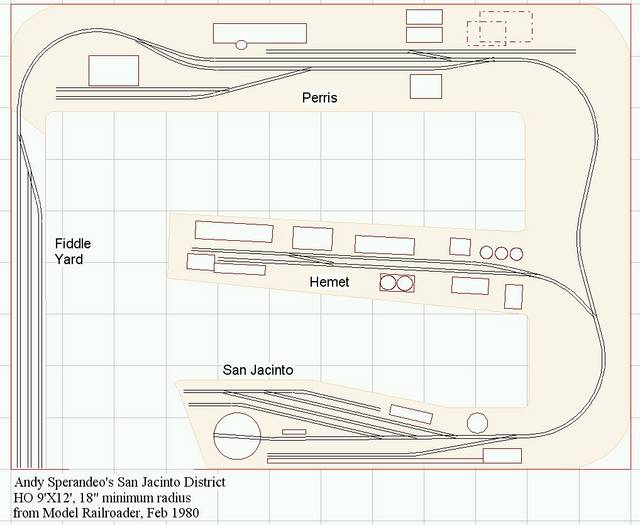The Alameda Belt Line on its namesake island near Oakland in California has been in the back of my mind since reading about it in Barry Wood's article in the April 1980 Model Railroader. This little line had a lot of interesting elements: ownership by, and interchange with, the Santa Fe and Western Pacific (via car float and car ferry for much of its life); character-filled industries; an interesting competition with the Southern Pacific; and a reasonably compact scope. My interest in it has only increased since moving to the Bay Area.
Wood's article included a track plan, primarily focusing on the Alaska Basin area of the prototype. While it's a pretty good plan, it was set in an era after the car floats and ferry had stopped running and did not reflect some of what I feel were the signature elements of the prototype, like the dual interlaced wyes. The area Wood focused on is still pretty interesting, with a wide variety of industries, some quite large:

I've been including some aspects of the ABL in my plans for my own N scale Oakland Harbor Belt Layout for some time. For example, the Alaska Basin area will look something like this when I get back to the garage version of the OHB.

Click here to read more about Alaska Basin on the OHB.
One of my friends has said, "Byron, you're obsessed with the ABL. Why not just model it instead of making something up?" Fair question -- and if there were decent Alco S-2s in N scale who knows if I might have taken that path -- but then again, the freedom of proto-freelancing offers the chance to include more traffic and other engaging elements lacking in the real-life ABL.
Galveston Island, Texas is another fascinating rail-marine environment, well described in Cyril Durrenberger's and Tom Eishenhour's May 1983 MR article on the Galveston Wharves Terminal Railway (GWT). While this article also includes a reasonable track plan, the real attraction to me was the map spread across the top of two facing pages: huge industries, wharves, piers, grain elevators, and container facilities; four major interchanging roads (SP, ATSF, BN, GH&H [MP-controlled]); and wide variety of commodities.
The concentration of railroading created by the port facilities makes for an amazing variety and scope of potential modeling. Maybe a little too much scope, in fact … while the ABL might be too small, Galveston is probably just too big. I've done one custom design inspired by Galveston so far, but it's hard to capture even a hint of the signature elements of the prototype on a mid-size or smaller trackplan. Maybe another opportunity will present itself one day. Today the GWT is known as the Galveston Railroad (AAR reporting marks GVSR). Those reporting marks are seen on thousands of Golden West Service cars across the country.
So, while it wasn't the model railroad track plans that appealed to me in these cases, the attractions of the real-life rail-marine prototypes were definitely a huge inspiration to my modeling concepts and vision today.
Next time, I'll conclude this series with a layout that, while far from perfect, puts many of the elements described so far into practice. Anyone have a guess which layout it might be?







